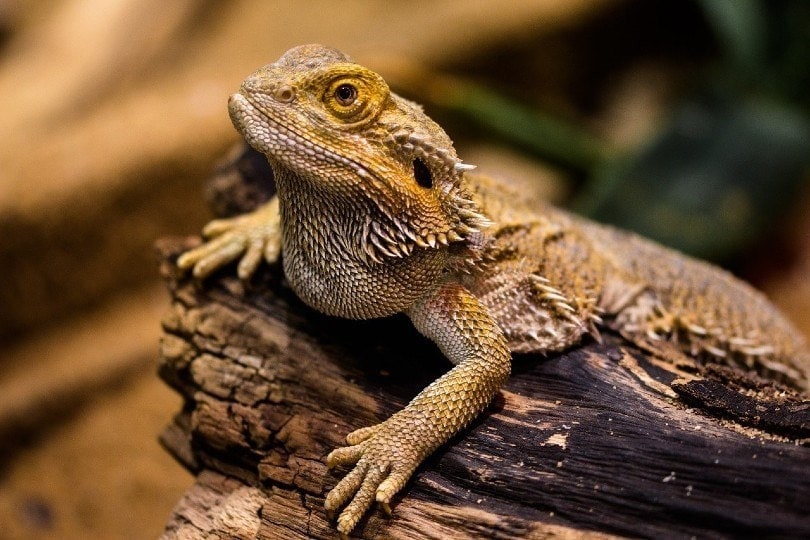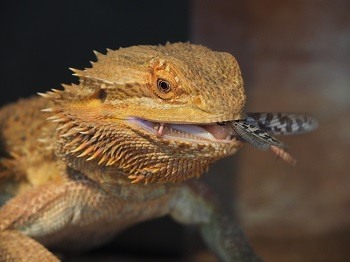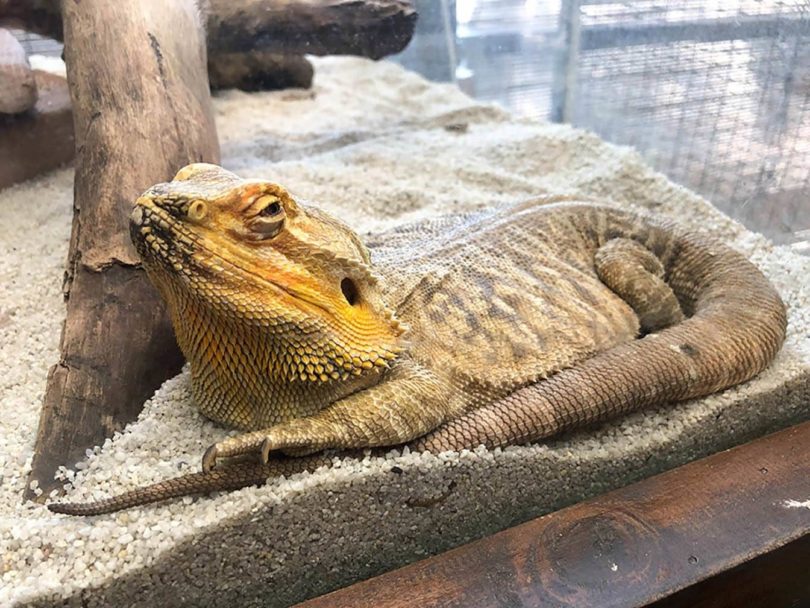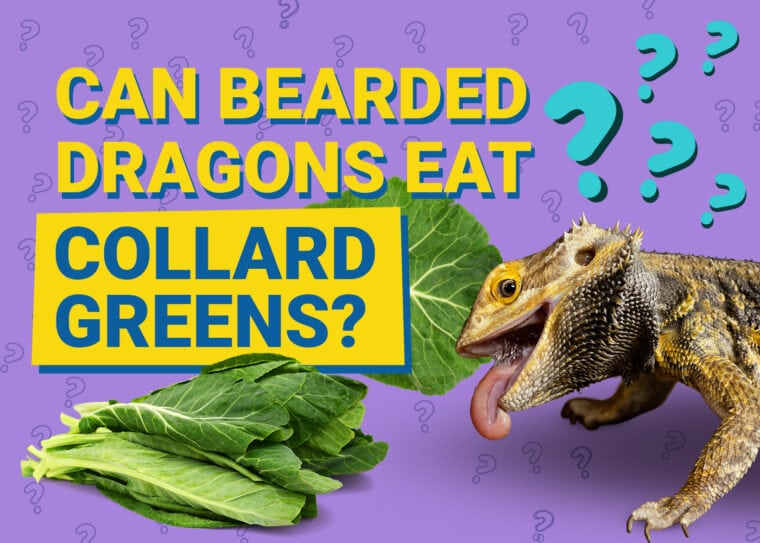
Bearded dragons make excellent exotic pets for families, particularly kids. Caring for them is pretty simple as they are omnivorous and will often feed on a mixture of insects, mice, fruits, and vegetables. As they grow older, plant-based foods make up a large part of their diet.
Collard greens are ranked as one of the most nutritious leafy greens. As a result, collard greens are safe for consumption by bearded dragons. Due to its high nutritional value, this superfood can be consumed by the dragon daily.
Why Bearded Dragons Should Eat Collard Greens
Let’s have a look at some of the benefits associated with feeding collard greens to your bearded dragon.
1. High Calcium Levels
Collard greens are excellent sources of calcium. This nutrient is vital for bearded dragons, especially when they are young, and their bones are developing. Collard greens have 268 mg of calcium, which is crucial for your pet.
A calcium deficiency in your bearded dragon is the leading cause of Metabolic Bone Disease. This condition is costly to treat and can be fatal, leading to the death of your pet. Therefore, it’s essential to add collard green to the diet to reduce the chances of this happening.
2. Excellent Source of Vitamins
Essential vitamins A, C, and K, are prominent nutrients found in the collard green. Vitamin A keeps the eye vision of the dragons sharp and healthy, while vitamin C is critical for immunity boost and growth.
Vitamin D is essential for bone development. These vitamins will preserve the health of your pet and keep it thriving.

3. Rich in Fiber
As a raw vegetable, collard green is rich in fiber that aid in digestion. While the dragons may eat insects or other animal-based foods, the leafy greens come in to boost gut health and prevent constipation. Incorporating collard greens in the daily diet goes a long way in ensuring your pet is feeding well and passing stool without any issues.
4. Ideal Calcium to Phosphorus Ratio
Collard greens have low phosphorus in comparison to calcium. This is very important because high phosphorus levels tend to affect calcium absorption in your bearded dragon’s body. A deficiency in calcium levels would result in a metabolic bone disease for your pet.
This low phosphorus content is essential, especially for young dragons. The beardies will quickly absorb the calcium needed to spur growth without any interference. Besides, this also boosts the other vital nutrients found in the green collard, especially the vitamins and fiber.
5. Low Calories
A look at the nutrient per serving in collard green shows that the number of carbohydrates, sugar, and fat are relatively low. A cup of fresh collard greens contains less than 1 gram of fat, 2 grams of carbohydrates, and 1 gram of sugar. Because of this, these leafy greens are a top tier nutrient-dense food that you should add to your pet’s diet.
6. Balanced Nutrients
While most vegetables contain healthy nutrients, some of them may inhibit the absorption of critical minerals in the body of your bearded dragon. Adding some leaves of collard greens to the vegetable salad increases the nutrient density.
Besides, the collard greens also have potassium, antioxidants, folate, which are essential for the development of your bearded dragon.

How Often Should Your Bearded Dragons Eat Collard Greens?
Due to their high nutritional value, you can feed these leafy vegetables to your dragon every day. The benefits are essential for growth and development. The high levels of calcium balance out the phosphorous and oxalate levels to ensure that the dragon does not get any bone diseases.
With an easy schedule, you can feed the young bearded dragons once or twice a day and, on the other hand, feed the adult ones, once a day. This plan supplements their diet since they are omnivorous and might feast on other animal-based foods in the day, such as insects. The eating schedule can be adjusted and tailored according to the bearded dragon’s appetite.
Foods That Can Be Served Alongside Collard Greens
You can also mix the collard greens with other vegetables such as dandelion leaves, mustard greens, cactus pad, turnip greens, grape leaves, watercress, and endive. A blend of these foods prevents deficiencies and provides a high in calcium, low phosphorus, oxalates, and goitrogens. You can serve a salad of these vegetables daily.
Be careful when feeding your bearded dragon with vegetables such as kale and cabbage. These foods have high levels of goitrogens, which can result in thyroid problems in bearded dragons. This condition interferes with iodine uptake, and when it’s in excess, it may lead to hypothyroidism.
These lizards also enjoy eating fruits such as melons, mangoes, apples, grapes, tomatoes, guavas, and bananas. However, these fruits are mostly deficient in minerals, and hence, should be fed to the bearded dragons sparingly. For healthy fruits, you can go for figs, raspberries, apricots, dates, or strawberries.
Their diet also includes flowers such as carnations, roses, and hibiscus. Before feeding these to the bearded dragon, make sure no chemicals are used in the growing process.
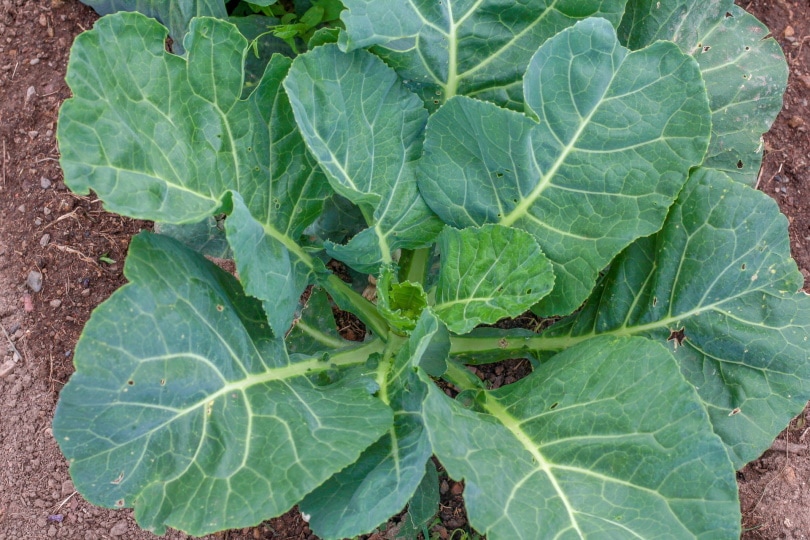
How to Prepare Collard Greens for Your Bearded Dragon
To preserve most of the collard greens’ nutrient value, it is best if you served it raw and uncooked. In most cases, cooking the food makes the oxalates more outstanding, binding the calcium nutrient. This simple process makes it very easy, and anyone can feed the dragon.
Some vital things to consider as you prepare the meal:
Final Thoughts
Bearded dragons are very easy to feed and manage. They are not picky eaters so it’s easy to maintain them.
As you shop collard greens for your consumption, you can add some for your beardy, thanks to the high nutrition content of the veggie.
Featured Image Credit: Brent Hofacker, Shutterstock




